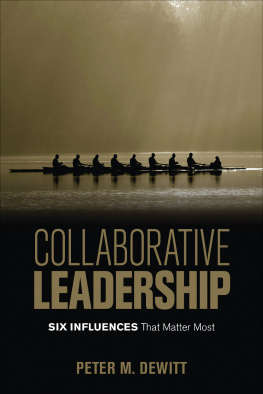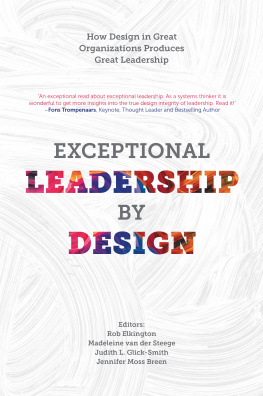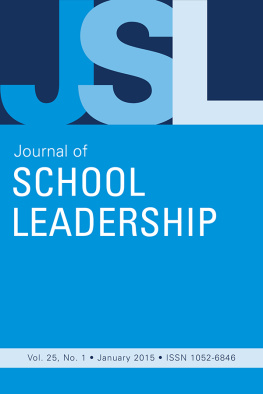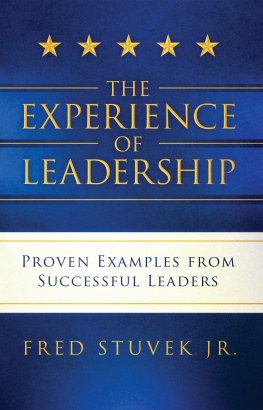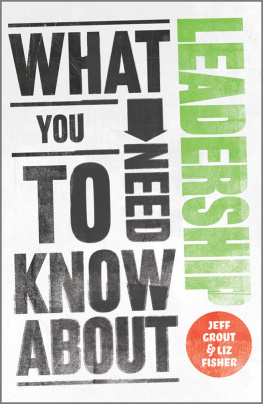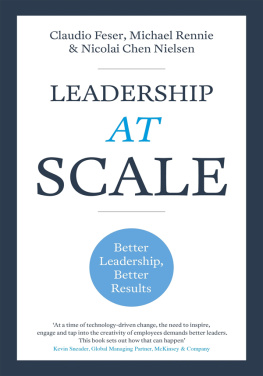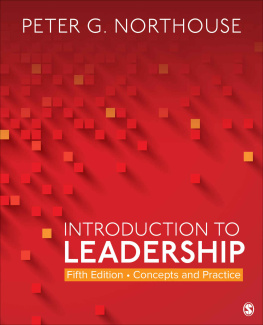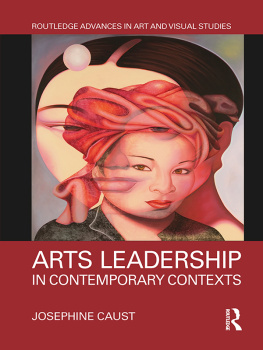Collaborative Leadership
Douglas Manion, for your continued support and for always being there
Collaborative Leadership
Six Influences That Matter Most
Foreword by

FOR INFORMATION:
Corwin
A SAGE Company
2455 Teller Road
Thousand Oaks, California 91320
(800) 233-9936
www.corwin.com
SAGE Publications Ltd.
1 Olivers Yard
55 City Road
London EC1Y 1SP
United Kingdom
SAGE Publications India Pvt. Ltd.
B 1/I 1 Mohan Cooperative Industrial Area
Mathura Road, New Delhi 110 044
India
SAGE Publications Asia-Pacific Pte. Ltd.
3 Church Street
#10-04 Samsung Hub
Singapore 049483
Copyright 2017 by Corwin
All rights reserved. When forms and sample documents are included, their use is authorized only by educators, local school sites, and/or noncommercial or nonprofit entities that have purchased the book. Except for that usage, no part of this book may be reproduced or utilized in any form or by any means, electronic or mechanical, including photocopying, recording, or by any information storage and retrieval system, without permission in writing from the publisher.
All trademarks depicted within this book, including trademarks appearing as part of a screenshot, figure, or other image, are included solely for the purpose of illustration and are the property of their respective holders. The use of the trademarks in no way indicates any relationship with, or endorsement by, the holders of said trademarks.
Printed in the United States of America.
Library of Congress Cataloging-in-Publication Data
Names: DeWitt, Peter M., author.
Title: Collaborative leadership : 6 influences that matter most / Peter M. DeWitt.
Description: Thousand Oaks, California : Corwin, a SAGE Company, 2016. | Includes bibliographical references and index.
Identifiers: LCCN 2016008170 | ISBN 978-1-5063-3711-1 (pbk. : alk. paper)
Subjects: LCSH: Educational leadershipUnited States. | School management and organizationUnited States. | Group work in educationUnited States.
Classification: LCC LB2805 .D48 2016 | DDC 371.2dc23 LC record available at https://lccn.loc.gov/2016008170
This book is printed on acid-free paper.
Executive Editor: Arnis Burvikovs
Senior Associate Editor: Desire A. Bartlett
Senior Editorial Assistant: Andrew Olson
Production Editor: Libby Larson
Copy Editor: Amy Harris
Typesetter: C&M Digitals (P) Ltd.
Proofreader: Sally Jaskold
Indexer: Joan Shapiro
Cover Designer: Michael Dubowe
Marketing Manager: Anna Marie Mesick

Foreword
John Hattie
Models of leadership abound; it seems that any new model can be formed by simply inventing an adjective to preface the word leadership. Is collaborative leadership the new fad? It may well be if it takes all the old notions and merely repackages them under a slightly new hierarchy. It may well not be, if it distills an essence of working together with directionbut then we have had distributed leadership, transformational leadership, and so many more models that are based on working together. Peter DeWitt is quite specific about what he meansleaders need to be actively engaged in the learning process and enhance the instruction of all in the school to deepen learning for all (including their own learning).
Thus, collaborative leadership embodies the instructional focus, the deep and mastery notion, and the self-learning notion but centers on enhancing learning. The focus is not how we teach, who we teach, or what we teach but a balance between directing all to focus on enhancing learning. To know and maximize our impact! It begs the impact questions: What do we mean by impact in this school, what is the desired impact we are aiming for in this school, and how many students gain this desired impact? Impact should never be a neutral word but should be based on a collective understanding across the teachers (and also preferably across the students) about what it means to be good at something in this school. What are exemplars of a good grade five, of a good English assignment, of a good production for this student at this age or phase of their learningand most importantly is this notion of impact a shared understanding? One of the greatest issues in our schools is that teachers so often do not share common conceptions of challenge, progress, or expectations. Thus, it can be random whether students thrive or stall depending on the conceptions of their teacher.
To share these conceptions requires excellent leadership. It requires building trust, it requires skill at conducting debates about shared notions of standards, it requires assembling multiple sources of evidence from teachers illustrating their notions of their expectations and standards, and it requires gentle pressure relentlessly pursued (as Michael Barber often claims). This notion of collaboration is the focus of this book.
In a recent meta-analysis, Rachel Eells (2011) found that teachers collective efficacy has a very high relation to student achievementacross subject areas, when using varied instruments, and in multiple locations. Indeed, it is the new #1 of all the 200 influences I have investigated as part of Visible Learning (Hattie, 2009, 2012, 2015). Albert Bandura (1997) defined collective efficacy as a groups shared belief in its conjoint capabilities to organize and execute the courses of action required producing given levels of attainments (p. 477). Certainly, there is a cycle here, in that having higher collective efficacy needs to be supported by evidence of actually having an impact on student learningwhich in turn fosters teachers personal sense of efficacy, their professional practices, and their collective beliefs with their colleagues that they can actually make a major difference (Goddard, Hoy, & Woolfolk Hoy, 2004). There needs to be a sense of shared agency to make this difference, an agreement with group goal attainment, and a high level of trust among colleagues.
Note, the key is teachers collective efficacy, thus a major role of school leaders is to keep a focus on this. How do we make transparent the collective notions of expectations, and as critical, how do we feed in the evidence of the impact of these expectations to further continue the cycle of showing that these expectations can be realized? The leadership role does not stop at building beliefs; they must then be enacted and fed back into the cycle, and there needs to be between-school triangulation that the local set of expectations are high and realizable.
Christine M. Rubie-Davies et al. (2012) have documented that teachers who hold high expectations typically do so for all students, and those who hold low expectations typically do so for all studentsand both are successful in their respective ways. The high-expectation teachers have larger impact, the low kept their students low. She has investigated the classrooms of these teachers, followed them through the school year, and amassed a powerful defense of the importance of high expectations. It is likely to be no different for school leaders in their leading the narrative among their teachers about collective efficacy.

